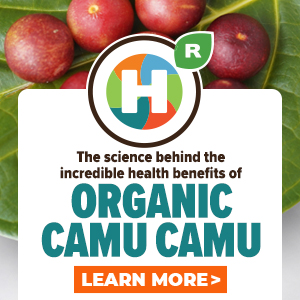
Grow Your Own Antioxidants with Aronia Berry Bushes
Thursday, May 14, 2009 by: Barbara L. Minton
Tags: aronia, health news, Natural News
- The hidden war above: Chemtrails, HAARP and the battle for planetary control
- CLOT SHOT PLANDEMIC UNFOLDING: Fibrous, rubbery clots caused by covid injections have prion-like seeding activity
- Widespread social and economic unrest: Steve Quayle issues urgent financial warning of imminent asset collapse in new interview with Mike Adams
- DEATH by VACCINE or face PRISON time: Canadian Freedom Convoy leaders CONVICTED for protesting forced vaccination during the Covid Plandemic
- Aerosolized bioweapons? Strange “diploid biomasses” falling out of the sky in Florida captured under the microscope
- Hidden toll: Federal secrecy shields wind industry's eagle deaths to protect land-hungry turbines that yield minimal power
- 7 Must-have multi-functional survival tools for every prepper
- Florida Senate passes bill banning geoengineering and weather modification and Governor DeSantis has indicated it will become law
- Analysis: The coming economic collapse, a mass uprising and Trump's three secret weapons to halt the growing revolt
- Idaho Gov. Brad Little vetoes Medical Freedom Act
- FBI imposed gag order on agents to silence Hunter Biden laptop truth before 2020 election, new chat logs reveal
- Global pedophile ring “Kidflix” shut down in landmark Europol operation
- “Project Aldrin”: Senate probes Meta's alleged censorship dealings with China
- How to detox from metals falling out of the sky
- Kiss Your Genetic Privacy Good-Bye! 23andMe Gets Green Light to Sell Your Intimate Genetic Details to Anyone They Want
- Defunding DEADLY mRNA jabs: Government funding for mRNA technology being scrutinized and sidelined until proven "safe and effective" for real
- Top German general admits that CONSCRIPTION is “absolutely” necessary to combat Russia
- U.S. Military EXITS fake “Climate Change” hoax after a DECADE of wasting time, money, manpower and resources
- Newly released JFK files reveal Pentagon's role in creating Lyme disease and covid in the same lab
- European Court of Justice: Healthcare professionals who promoted or administered COVID-19 vaccines are CRIMINALLY LIABLE for any harm caused
- Aerosolized bioweapons? Strange “diploid biomasses” falling out of the sky in Florida captured under the microscope
- Oncologist warns of ‘terrifyingly aggressive’ cancers in children, linked to immune suppression from COVID vaccines
- Britain’s descent into police state censorship: Parents raided for questioning their daughter’s school system online
- Analysis: The coming economic collapse, a mass uprising and Trump's three secret weapons to halt the growing revolt
- Utah governor allows ban on LGBT pride flags in public buildings and schools, will take effect without his signature
- Kiss Your Genetic Privacy Good-Bye! 23andMe Gets Green Light to Sell Your Intimate Genetic Details to Anyone They Want
- FBI imposed gag order on agents to silence Hunter Biden laptop truth before 2020 election, new chat logs reveal
- The Health Ranger releases “Vaccine Zombie” song and music video, using AI-animated zombies for the music video
- DARPA: The shadowy innovator behind the world’s most advanced military technologies
- Mike Adams releases country western hit single: Goin’ Back in Time is Comin’ Home
- “Project Aldrin”: Senate probes Meta's alleged censorship dealings with China
- When antibiotics are unavailable, natural ANTIMICROBIAL compounds become essential first line defenses against infection
- AI-powered forecasting model proves more accurate than traditional systems at predicting the weather
- German researchers find link between mRNA vaccines and GENETIC CHANGES that precede CANCER and AUTOIMMUNE DISORDERS
- Dr. Mary Talley Bowden drops bombshells about children being permanently damaged by mRNA jabs during Tucker Carlson interview
- Ancient kitchen secrets REVEALED: How garlic, ginger and green onions fight cancer and heart disease
- Newly released JFK files reveal Pentagon's role in creating Lyme disease and covid in the same lab
- California's social media censorship law struck down: A victory for free speech or a threat to online safety?
- The Health Ranger releases “Vaccine Zombie” song and music video, using AI-animated zombies for the music video
- Dr. Mike Yeadon releases 15-minute testimony - WATCH - about genocidal intent of COVID “vaccines”
- EPA advisor admits the agency is funneling billions to climate groups ahead of Trump’s return to White House
- Rep. Nancy Mace introduces bill to ban biological males from female facilities on federal property
- Florida takes a stand: DeSantis proposes permanent ban on mRNA vaccine mandates
- Sugarcane extract superior to cholesterol-lowering drugs?
- Survival 101: Effective EMF blocking techniques
- Mike Adams releases country western hit single: Goin’ Back in Time is Comin’ Home
- OpenAI whistleblower who dissented against how the company trained ChatGPT found dead
- Attorney and TikTok influencer explains how he was offered hundreds of dollars to make false claims about Trump, Republicans
- CONSERVATIVES SOUND THE ALARM: Big Pharma and the Left trying to force $32 billion money grab from America’s seniors into year-end spending deal
- Pilots report mysterious lights 'moving at extreme speeds' across Oregon skies
- Trump expected to choose Kelly Loeffler as his agriculture secretary even though she was caught INSIDER TRADING during COVID
- Marketing director responsible for WOKE Jaguar rebrand is also an LGBT activist who supports Black Lives Matter
- Unpacking the Lies That We’ve Been Fed – new song and music video released by Mike Adams, the Health Ranger
- Poll: Majority of Ukrainians want peace negotiations to end war with Russia
- Red Cross issues warning to stop blood plasma donations from vaccinated people
- Scientists confirm: GENIUS brain function can be spontaneously unleashed in humans without any apparent cause
- EPA advisor admits the agency is funneling billions to climate groups ahead of Trump’s return to White House
- HYSSOP: What research reveals about the health benefits of this ancient holy herb
- Two containers with completed ballots fall out of truck in Florida
- Fully vaccinated about to see “tsunami” of illness and death, warns virologist
- Global leaders unite to clamp down on “misinformation” with UN-backed Cascais Declaration
- BREAKING: 2025 NDAA authorizes mandatory military draft of WOMEN across America… as Pentagon pursues global NUCLEAR war with both Russia and China at the same time
- Newly released JFK files reveal Pentagon's role in creating Lyme disease and covid in the same lab
- Michael Yon warns of a ZIONIST TAKEOVER in Trump’s second administration
- BOMBSHELL: DNA testing kits are a SCAM to develop ethnic-specific bioweapons
- Ozempic and Wegovy weight loss drugs are injectable LIZARD VENOM PEPTIDES that may unleash a devastating wave of organ failure… side effects align with symptoms of SNAKE BITES
- The Health Ranger releases “Vaccine Zombie” song and music video, using AI-animated zombies for the music video
- Israeli soldiers accused of even more torture and abuse in the West Bank
- These 13 countries just signed an agreement to engineer a global FAMINE by destroying food supply
- NASA admits that climate change occurs because of changes in Earth’s solar orbit, and NOT because of SUVs and fossil fuels
- RFK Jr. clears key hurdle: Sen. Susan Collins backs controversial HHS nominee, signaling a new era for health policy
- Sermon 30: How Jesus reveals Caesar’s FAKE CURRENCY and FALSE AUTHORITY
High quality antioxidants help keep away signs of aging and disease
When oxygen interacts with cells, oxidation is inevitable. Cells die and are replaced with fresh, new cells. It is a natural process that keeps the body healthy. Although the body is created to process oxygen very efficiently, a small percentage of cells get damaged in the oxidation process and turn into free radicals. They are "free" because they are missing a critical molecule that would keep them stable. To find their missing molecule, they go on a rampage in the body, stealing molecules where they can. In this process, the DNA of other cells can be damaged, with aging and disease as the result.
Free radicals trigger a chain reaction. When a free radical oxidizes a fatty acid, it changes that fatty acid into another free radical, which can then damage another fatty acid and so on. Eventually, the body's natural free-radical defense system becomes overwhelmed. People living in the modern world have a much heavier oxidative burden than people living a few generations ago, due to environmental pollution and stress. They also have a greater awareness of what causes aging and disease, and realize the need for an added natural antioxidant defense network. The result is an exploding demand for foods and supplements high in antioxidants that can support the body's defense against free radicals.
Flavonoids are the biggest class of antioxidants. More than 5,000 flavonoids in various foods have been identified by scientists. Polyphenols, often referred to simply as phenols, are a smaller and more specific class of antioxidants. Different flavonoids and polyphenols vary in their effectiveness and usefulness in the body.
The deeper and more intense the color, the greater the level of high quality antioxidants
One of the most effective and useful classes of flavonoids is anthocyanins, found in fruits and berries. Anthocyanins give berries their dark rich color, and the darker and richer the color is, the higher the anthocyanin content. In a ground breaking study from the USDA, varieties of Aronia berries, blackberries, blueberries, red currants, gooseberries, and elderberries were evaluated to determine their anthocyanin concentrations.
Aronia berries had the highest total anthocyanin concentration (1480 mg/100g fresh weight). Blueberries displayed an antioxidant level less than a third that of Aronia berries (486 mg/100g fresh weight). The lowest concentration was found in one of the gooseberry varieties. Some of the gooseberries contained no anthocyanins at all. Total proanthocyanin concentrations ranged from Aronia berries (664mg/100g) down to elderberries (23mg/100g). Aroniaberries also displayed the highest lipophilic and hydrophilic antioxidant capabilities. Total amounts of phenols underscored the outstanding nature of the antioxidants in Aronia berries.
The health benefits of Aronia berries are currently being discovered
Research into the health benefits of the Aronia berry is in its infancy. If the early studies are any indicator, more research will continue to document a wealth of benefits from this berry, placing it at the head of the berry list.
The ability of antioxidants from anthocyanins, phenols, and quercetin glycosides from Aronia berries to fight against induced oxidative stress in human blood platelets was recently studied. Aronia berry extract significantly inhibited platelet protein carbonylation, and thiol oxidation. The extract also produced a distinct reduction of platelet lipid peroxidation. However, the most interesting finding from the study came from preliminary experiments in which the researches observed that the extract reduced oxidative/nitrative stress in blood platelets from patients with breast cancer, showing the Aronia berry to contain an important antioxidant for that group of people. (Journal of Physiological Pharmacology, December, 2008)
An animal model study in 2004 at Fuji Women's University showed that the antioxidant effects of Aronia berry extract could treat acute gastric hemorrhagic lesions in rats, suggesting it might be an effective natural treatment for severe stomach problems in humans, including ulcers.
A recent publication, Chokeberry, A Clinical Perspective by Dimitri Papadimitrious, Ph.D. has chronicled much of the other research done so far. He reports the first study of Aronia berries found a reduction in oxidative markers in semen when anthocyanins from the berries were given to 38 male subjects with low sperm counts. Another trial found a reduction in oxidative markers after administration of Aronia berry juice (23 mg anthocyanins/100mL) to athletes after completion of strenuous exercise and after a 24 hour recovery period.
A trial related to oxidative stress looked at pregnancies complicated with intra uterine growth retardation, a stress-promoting complication. Administration of aronia berry anthocyanins reduced oxidative markers compared to a group receiving a placebo. In a three month trial, researchers found 7 ounces of Aronia berry juice could reduce glucose levels in subjects suffering from diabetes mellitus.
A study focusing on heart health evaluated the impact of Aronia berry extract (255 mg/d) in capsules for cardiovascular support by reducing risk markers under stress conditions such as heart attack. Significant reduction of oxidative stress was evidenced by a reduction in inflammation and C-reactive protein level.
The role of the Aronia berry in colon cancer prevention was studied. Rats were fed an anthocyanin extract from the elderberry and the Aronia berry. The rats receiving the Aronia berry were found to have a reduction in multiple markers of colon cancer risk.
Potential benefits have also been suggested for the Aronia berry against cardiovascular disease, gastric mucosal disorders, urinary tract disorders, and eye inflammation. This is only the beginning and much more research is needed.
Grow high quality antioxidant berries for your own use or to sell
The black Aronia berry bush (Aronia melancarpa) grows to six feet or more in height and width. It is a rapid grower. A nursery sized bush can turn into an impressive large shrub in just a couple of years. It is a late bloomer, producing its white blossoms after the threat of frost has passed in May. The flowers are quite striking against the dark green of the leaves.
One mature Aronia berry bush can produce 38 pounds of fruit. This astounding yield makes adding a few bushes to the backyard a very good investment in your health. For anyone with farm or orchard land, growing Aronia berries provides huge potential.
Being a widely seeded North American native, the Aronia berry bush is extremely forgiving of growing conditions, and will tolerate swampiness or dryness, and from acid to mildly alkaline growing media. It can thrive in full sun or half shade, and is rarely troubled by insects or diseases. It is cold hardy across the U.S. and most of Canada, and can be planted or transplanted in any season with equal success.
The plants can be grown as a crop, used as a street-side shrub, or planted as specimens where they will capture attention. Aronia berry bushes make an excellent backdrop for smaller shrubs and perennials. Aronia berry leaves produce spectacular color in the fall, and the plants are highly pest and disease resistant.
Autumn Magic is an Aronia berry cultivar promoted by the British Columbia Botanical Garden. It has more compact, shiny leaves than other Aronia varieties, and sets many excellent fruits that are a bit larger than the norm.
A quick way to expand your amount of Aronia berry bushes is to slice off suckers (new plants cropping up from the roots system of the older plant). Use a spade to make a sharp cut in the middle of the root that connects mother and baby. Then spade up the baby with its roots still encased in dirt, and move it to another location.
The deep purple fruit of the black Aronia berry is often called by its scientific name Aronia because it has a more pleasant connotation than Chokeberry. Natives and early settlers used the berries extensively as medicine, food, and dye for cloth, but they did not become popular for commercialization in the U.S. until recently.
The pea sized berries are harvested in autumn, and have a strong, stable natural color and a dry and somewhat sour flavor, making them perfect for wine or juice making. Fruit can be mechanically harvested with equipment similar to that used with blueberries.
Aronia juice has been gaining popularity sold either alone or blended with other fruit juices such as apple or grape. The Russians ferment Aronia and apple juice to make red wine. Aronia juice improves the color, tannin level and high sugar content of grape wines.
The berries can be put through a juicer at home, and the juice can be stored in tightly sealed jars for several days or it can be frozen. Drink it straight or blend it with other juices depending on what kind of taste is desired. The level of anthocyanins is over five times greater in Aronia juice than in cranberry juice, and the juice is vitamin and mineral rich. Of course, no powdered extract in a capsule can provide bioavailable nutrients with the quality of fresh juiced fruits.
The tart taste of Aronia berries comes from their high level of tannins. Freezing the berries reduces the tannin content and increases the sweetness, making their taste more like that of the blackberry.
Aronia berries are finally garnering some PR
One of the nurseries that specializes in Aronia berry bushes held a festival last fall to spread the word about the healthful fruit. Dawn Sagario, reporter for the DeMoines Register covered the event. She reported a huge crowd with many people who couldn't get enough of the berries. They were seen as healthy and energizing, and good for the body and the spirit.
Aronia products that included jelly, juice, cayenne pepper sauce, syrup, barbecue sauce, and salsa sold out quickly, and there was lots of buzz about the versatility of the berries. A commercial horticulturist attending the fair commented that the biggest interest in Aronia berries seemed to be about their health benefits.
The owners of the nursery chose Aronia over grapes for their orchard several years ago and their organic bushes have thrived with low maintenance. The shrubs have grown so well that they added a couple of thousand more plants with succeeding years. They report getting as much as 40 pounds of berries from mature plants, and about 20 pounds from younger ones. They say it takes four years before you really start to see large volumes of berries on the plants.
Much of their harvest goes to winemaking, where they say the berries add body and structure along with nutrients. According to them, a home owner can grow all the Aronia berries he could ever use. As a crop, Aronia berries can make between $8,000 and $10,000 an acre from mature plants.
For more information see:
http://www.paghat.com/chokeberry.html
http://digitalcommons.unl.edu/cgi/viewconten...
http://www.naturalproductsinsider.com/articl...
http://www.desmoinesregister.com/apps/pbcs.d...
About the author
Barbara is a school psychologist, a published author in the area of personal finance, a breast cancer survivor using "alternative" treatments, a born existentialist, and a student of nature and all things natural.Aronia at FETCH.news
Get independent news alerts on natural cures, food lab tests, cannabis medicine, science, robotics, drones, privacy and more.
Take Action: Support Natural News by linking to this article from your website
Permalink to this article:
Embed article link: (copy HTML code below):
Reprinting this article:
Non-commercial use OK, cite NaturalNews.com with clickable link.
Follow Natural News on Facebook, Twitter, Google Plus, and Pinterest
Science News & Studies
Medicine News and Information
Food News & Studies
Health News & Studies
Herbs News & Information
Pollution News & Studies
Cancer News & Studies
Climate News & Studies
Survival News & Information
Gear News & Information
News covering technology, stocks, hackers, and more



"Big Tech and mainstream media are constantly trying to silence the independent voices that dare to bring you the truth about toxic food ingredients, dangerous medications and the failed, fraudulent science of the profit-driven medical establishment.
Email is one of the best ways to make sure you stay informed, without the censorship of the tech giants (Google, Apple, Facebook, Twitter, YouTube, etc.). Stay informed and you'll even likely learn information that may help save your own life."
–The Health Ranger, Mike Adams












































